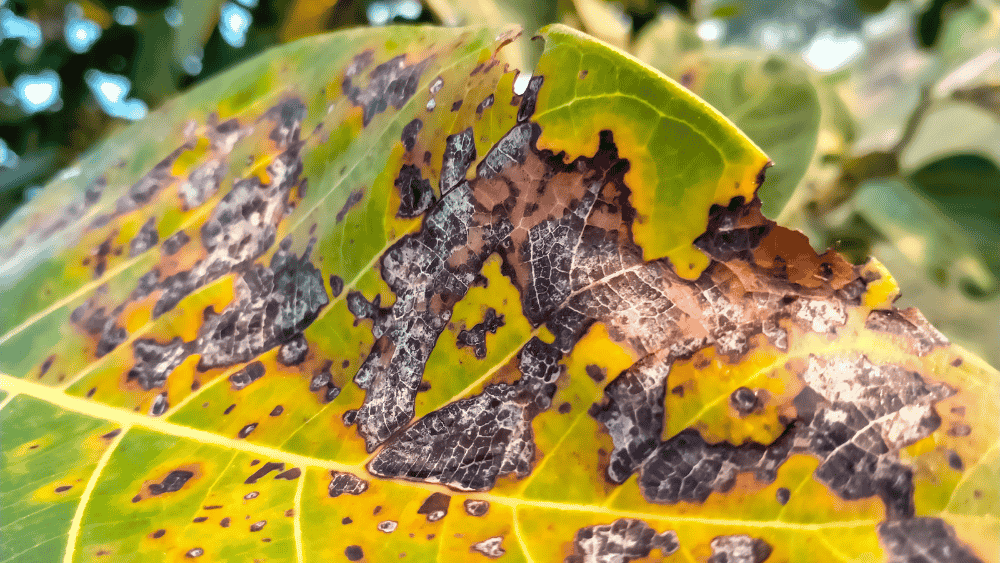
How to Identify and Treat Bacterial Disease in Plant Naturally
Share
Farmers take care of their beloved plants with utmost dedication, watering them well in the summer and protecting them during the winter frost. They make sure that their plants are appropriately fertilized, pruned, and receive sufficient nutrition.
However, an entire season’s hard work can be undone overnight by an invisible enemy if not taken care of—a bacterial disease in plant.
Unlike pests that chew through leaves, bacterial infections strike quietly, causing leaves to spot, wilt, and die before you even realize what’s wrong. Many farmers mistake these signs for nutrient deficiencies or fungal problems, losing precious time in the fight for their fields or implementing the wrong treatment methods.
In reality, identifying bacterial diseases early is the only way to contain the damage.
And in a world where chemical inputs are growing more expensive and harmful, farmers are now turning to natural, sustainable solutions that work.
This blog is a practical guide, built for farmers like you, to help you spot bacterial diseases in plants symptoms early and treat them using natural methods that protect not only your crop but also your soil, environment, and future seasons.
What is a Bacterial Disease in Plant?
A bacterial disease in plants refers to an infection caused by harmful bacteria that invade plant tissue, often through wounds or natural openings like Stomata. These bacteria multiply rapidly under favourable conditions such as high humidity and warm temperatures, resulting in visible symptoms that affect plant health and growth.
Common examples of bacterial diseases include bacterial leaf spot, soft rot, wilt, and bacterial blight. These diseases hinder nutrient transport within the plant, disrupt photosynthesis, and in many cases, lead to plant death. Bacterial infections commonly spread through contaminated tools, water, insects, and human contact.
How to Identify a Bacterial Disease in Plant?
Identifying bacterial diseases in plants early is the key to preventing their spread and implementing appropriate treatment in time. The bacterial diseases in plants symptoms often seem similar to those of fungal infections, but a few telltale signs can help you differentiate them effectively and save your plants from them early.
Here are some of the most common symptoms of bacterial diseases in plants that you must look out for:
Abnormal Leaf Discoloration
Watch out for leaves with abnormal discolouration or yellowing patterns that are different from the usual healthy colour of your plants. Such abnormal colours clearly indicate that a bacterial disease in plant is spreading quickly and needs treatment.
Unusual Spot Patterns
A majority of bacterial infections result in the formation of white or yellow-coloured spots on plant leaves, fruits, or flowers. A higher density of spots indicates that the infection is severe in plants and needs effective treatment immediately.
Wilting
Even when water is adequate, plants affected by bacteria can wilt due to internal damage and clogged vessels. It must be noted that wilting is also a common sign of viral infections in plants, so proper identification is important before treatment.
Water-soaked Lesions
Water-soaked lesions appear as small, wet-looking spots or wounds on leaves, stems, or fruits. Over time, they may turn dark brown or black. These lesions not only indicate existing infection, but they also serve as entry points for other bacteria.
Leaf Necrosis
Necrosis refers to the abnormal death of plant cells. When it occurs in plants due to bacterial infection, leaves may curl, dry, or drop prematurely. Leaf Necrosis is a telltale symptom of the bacterial blight of Tomato, a common plant disease.
Overgrowths
Overgrowths, such as galls or tumors, can form on roots and stems as a result of bacterial infection. These overgrowths house the majority of bacterial cells during a disease and can disrupt the plant's normal growth and development.
Proven Natural Ways to Treat a Bacterial Disease in Plant
A bacterial disease in plant can wreak havoc if left untreated for a long time. Fortunately, nature itself offers some of the most effective treatments for these diseases. Treating bacterial infections naturally is not only safer for the environment, humans, and animals but also supports long-term plant health and soil fertility.
Here are some proven natural solutions for treating bacterial diseases that are both effective and eco-friendly:
Garlic Extract
Garlic is a powerful, natural antibiotic that proves effective against bacterial infection in plants. Blend a few cloves of garlic with water, strain the liquid, and spray it on infected plants. Garlic inhibits bacterial growth and prevents the spread of diseases.
Neem Oil Spray
Neem oil has antimicrobial properties that help suppress bacterial growth and prevent diseases like bacterial leaf spot. Mix 2 tablespoons of cold-pressed neem oil with 1 liter of water and a few drops of mild soap. Spray this on affected leaves in the early morning or evening every day.
Diatomaceous Earth
The abrasive nature of diatomaceous earth can deter insects that transmit bacterial diseases, and its silica content improves plant resilience. Take food-grade diatomaceous earth powder and spread it uniformly across your field.
Compost Tea Solution
Compost tea not only nourishes the plant but also introduces beneficial microbes that outcompete harmful bacteria. Spray it regularly as a preventive measure. Use organic pesticides from brands like Octa Organics along with compost tea for long-term effectiveness.
Pruning and Sanitation
Pruning involves the selective removal of plant parts that are severely affected by bacterial infection, while sanitation focuses on keeping pruning tools clean to avoid transferring pathogens. Never compost infested material collected after pruning.
Use of Resistant Varieties
If you're facing recurring issues, especially with bacterial blight of tomato, consider planting resistant varieties. These plant varieties are genetically modified to withstand certain bacterial strains naturally and produce a healthy harvest.
Beneficial Microorganisms
Promoting the growth of beneficial microorganisms in your fields is an effective natural way to get rid of bacterial diseases in plants. These microorganisms outnumber harmful bacteria and feed on them, controlling their growth and spread.
Organic Virucide for Plants
Organic virucide for plants are known to show excellent results in suppressing the growth of bacterial pathogens. These natural pesticides not only eliminate bacteria from plants but also strengthen the plant’s immune response to resist diseases in the future, ensuring faster growth and better yield.
Keep Your Plants Disease-Free with Octa Organics
For every farmer, preventing and managing a bacterial disease in plant is crucial for protecting crop yield and long-term farm health. By identifying symptoms early and following a proactive, organic approach ensure stronger plants, healthier soil, and a more sustainable path forward for every growing season.
Preventing bacterial diseases in plants is always better than treating them. And when it comes to prevention, choosing the right organic support system makes all the difference. Octa Organics offers a complete range of eco-friendly plant care solutions designed to boost plant immunity and ward off diseases before they start.

